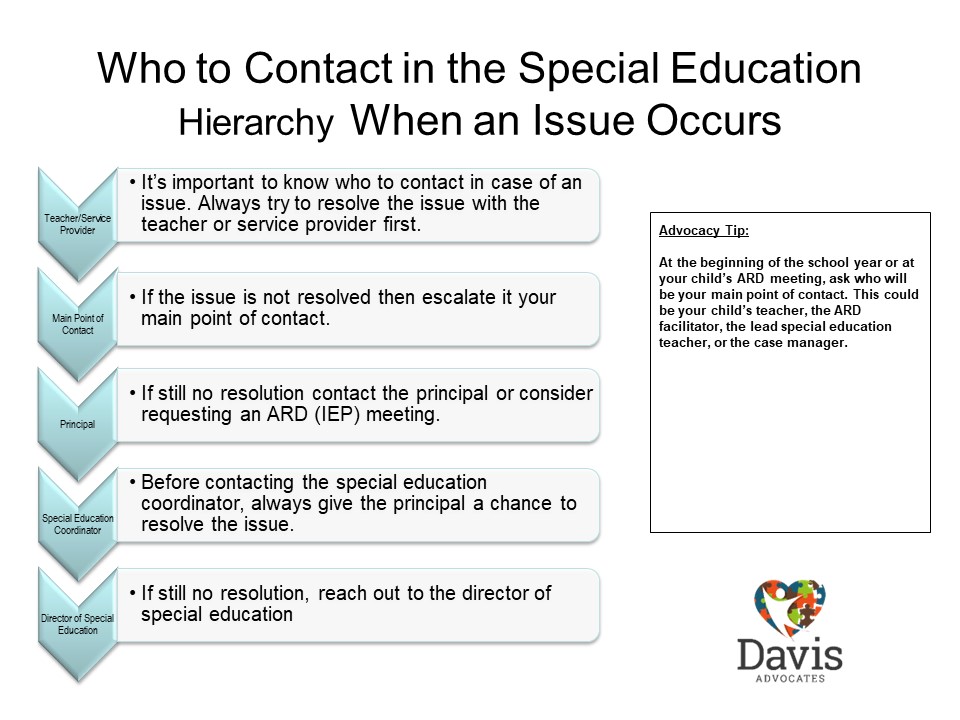The Special Education Hierarchy
As a parent or caregiver of a child with special needs, navigating the special education system can be confusing and overwhelming. Understanding the special education hierarchy at the school level is essential to ensure that your child receives the support they need to succeed in school. In this blog post, we will take a closer look at the special education hierarchy at the school level and the roles and responsibilities of each level.
Teachers
General education and special education teachers play a critical role in the special education hierarchy. They often will be your first point of contact when concerns or issues arise with your child’s Individualized Educational Program (IEP). Depending on your child’s placement, either the general education or special education teachers will be responsible for implementing the IEP. They will ensure that your child receives the specially designed instruction and accommodations listed in the IEP. For children attending general education classes the special education teacher takes on a role of a case manager. They work closely with students with special needs to ensure that they receive the support they need to succeed in school. Special education teachers also work with parents and caregivers to develop IEPs that outline the services and accommodations that their child needs to succeed.
Service Providers
The service provider is a professional who provides instructionally related services to your child if your child needs a related service in order to make progress towards their IEP goals. Related service providers typically include speech therapists, occupational therapists and physical therapists. Many school districts use a continuum of services model to determine the service delivery method for a particular student. For direct services the service provider is responsible for implementing any goals related to the service they provide. For indirect services, the service provider is responsible for ensuring your child and their teacher receives the support they need in order for your child to be successful in the school setting. Service providers work closely with teachers and support staff to teach and model effective strategies to help your child with skill acquisition in multiple settings.
Principals
At the school level, the principal is responsible for ensuring that all students, including those with special needs, receive a quality education. The principal works closely with district special education staff, who oversee the special education program and ensure compliance with federal and state guidelines. They l also work with the general and special education teachers to ensure that students with individualized education plans (IEPs) receive appropriate services and accommodations. The principal will work collaboratively with both parents and teachers to help facilitate resolution of any issues that arise. They may attend ARD meetings as the local education agency (LEA) representative.
Parents and Caregivers
Parents and caregivers also have an important role in the special education hierarchy at the school level. They have the right to request an evaluation if they suspect their child may have a disability that impacts their learning. They also have the right to participate in the ARD process and provide input on the services and accommodations their child needs. It is essential that parents and caregivers stay informed and involved in their child’s education to ensure that their child receives the support they need to succeed.

Navigating the special education hierarchy can be challenging, but understanding the different levels and roles can help you advocate for your child and ensure they receive the support they need to succeed in school. If you have questions or concerns about your child’s special education program, don’t hesitate to reach out to me for guidance and support.
In conclusion, understanding the special education hierarchy at the school level is essential to ensure that your child receives the support they need to succeed in school. The principal, special education director, special education teachers, and parents and caregivers all play critical roles in the special education hierarchy at the school level. By working together and staying informed and involved, we can ensure that all children, regardless of ability, have the opportunity to succeed in school and in life.


